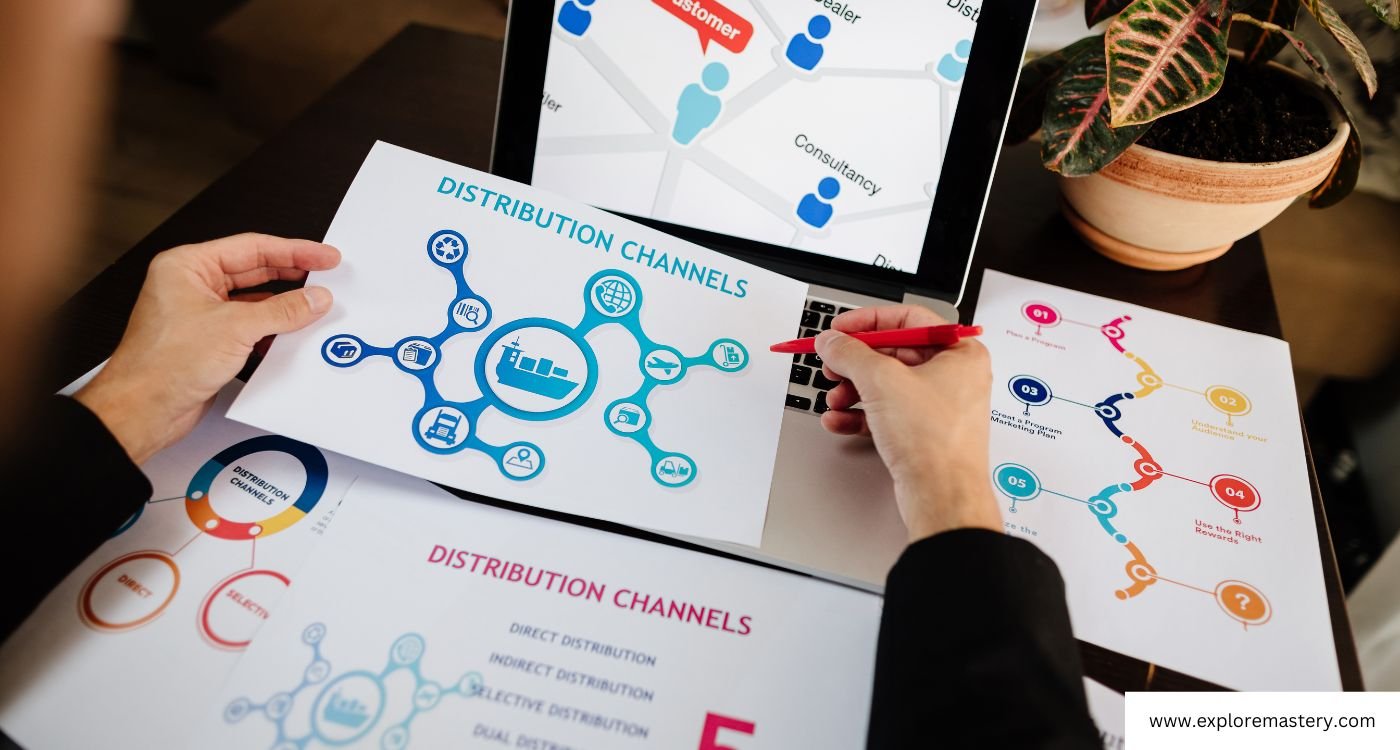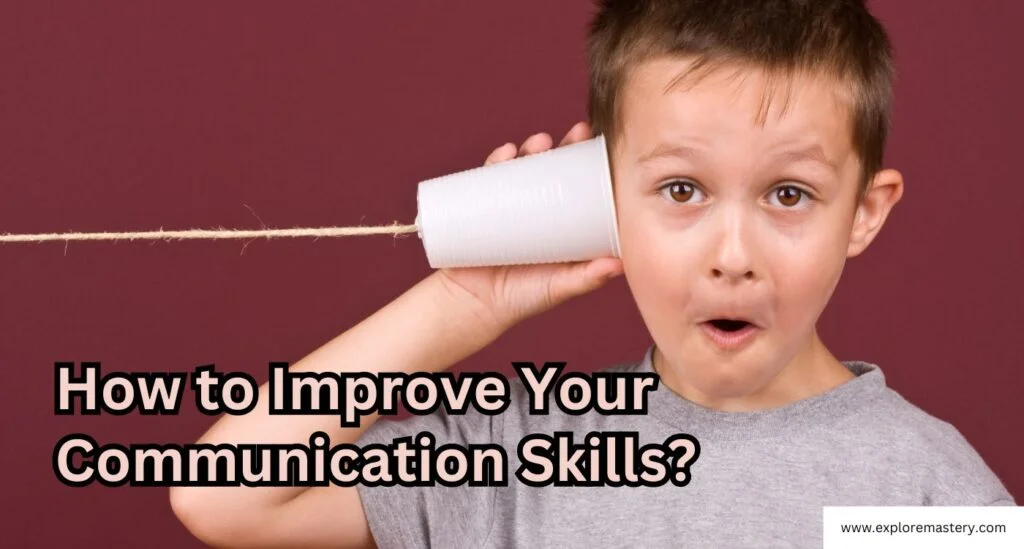Improving your communication skills can change your life. Whether you’re talking to friends, family, or coworkers, good communication helps you connect with others and share your ideas clearly. This article will guide you through essential tips to become a better communicator.
Overview
- Always communicate with empathy by understanding others’ points of view and finding common ground.
- Be clear and concise, avoiding fillers and tailoring your message to your audience.
- Practice active listening by not interrupting, asking questions, and showing you are engaged in the conversation.
- Watch your tone to ensure your message is received positively, whether in person or in writing.
- Be mindful of body language, using open posture and eye contact to align with your verbal communication.
Table of contents
1. Communicate with Empathy
Understanding Different Perspectives
To truly communicate with empathy, start by understanding different perspectives. This means actively listening to others and considering their viewpoints without judgment. Empathy allows you to see the world through someone else’s eyes, which can help in resolving conflicts and building stronger relationships. Here are some steps to get started:
- Listen actively: Give your full attention to the speaker and avoid interrupting.
- Acknowledge feelings: Show that you understand their emotions by nodding or using affirming words.
- Ask questions: Clarify any points you don’t understand to show that you are engaged.
Finding Common Ground
Finding common ground is essential for effective communication. It helps in creating a connection and making the other person feel heard. Here’s how you can do it:
- Identify shared interests: Look for topics or goals that you both care about.
- Be open-minded: Be willing to compromise and find solutions that work for everyone.
- Use storytelling: Share personal experiences to make your point more relatable.
Admitting When You’re Wrong
Admitting when you’re wrong is a powerful way to build trust and show empathy. It demonstrates that you value the other person’s perspective and are willing to take responsibility for your actions. Follow these steps:
- Acknowledge your mistake: Be honest and straightforward about what you did wrong.
- Apologize sincerely: Offer a genuine apology without making excuses.
- Make amends: Take steps to correct your mistake and prevent it from happening again.
Remember, people who communicate with empathy understand that conflicts do not have to become arguments. If everyone feels that their point of view is being heard and respected, all parties can work together to find a solution that works for everyone.
2. Be Clear and Concise

Effective communication hinges on clarity and brevity. When you speak or write, aim to be as clear and concise as possible. This not only helps in getting your message across but also ensures that your audience stays engaged.
Avoiding Fillers and Jargon
Fillers like “um” and “like” can clutter your speech and make you seem unsure. Avoid these fillers to keep your message clear. Similarly, steer clear of jargon and overly technical language unless you are certain your audience understands it. Simple language often works best.
Thinking Before Speaking
Take a moment to gather your thoughts before you speak. This helps in organizing your ideas and presenting them logically. A brief pause can make your speech more impactful and easier to follow.
Tailoring Your Message to the Audience
Your audience should always be at the forefront of your mind. Tailor your message to fit their level of understanding and interest. For instance, the way you communicate with friends will differ from how you address colleagues in a business meeting. Adjust your tone, language, and content accordingly.
Being clear and concise is a cornerstone of effective interpersonal communication skills. It helps in building strong relationships and ensures that your message is understood as intended.
3. Master Active Listening
The Importance of Not Interrupting
One of the most crucial aspects of active listening is to avoid interrupting the speaker. When you interrupt, it can make the other person feel undervalued. Instead, give them your full attention and let them finish their thoughts. This shows respect and helps you understand their entire message.
Asking Clarifying Questions
To ensure you fully grasp what the other person is saying, ask clarifying questions. This not only helps you understand better but also shows the speaker that you are genuinely interested in their perspective. For example, you might say, “Can you explain what you meant by that?” or “Could you give me an example?”
Showing That You’re Listening
Demonstrating that you are listening can be as simple as nodding your head or making eye contact. These small gestures can go a long way in making the speaker feel heard and valued. Additionally, you can paraphrase what they have said to confirm your understanding. For instance, “So what you’re saying is…” This technique is particularly useful in conflict resolution and networking situations.
Effective active listening is not just about hearing words; it’s about understanding the complete message. By practicing these steps, you can improve your communication skills and build stronger relationships.
4. Watch Your Tone
How you say something can be just as important as what you say. Your tone of voice can add power and emphasis to your message, or it can undermine it entirely. Let’s explore how to master your tone in different scenarios.
The Power of Positive Connotations
Using words with positive connotations can create goodwill and trust. A well-chosen word can make a big difference in how your message is received. For example, instead of saying “You failed to meet the deadline,” you could say, “Let’s work on meeting our deadlines more consistently.” This small change can make your feedback more constructive and less confrontational.
Controlling Tone in Real-Time Conversations
In real-time conversations, it can be challenging to control your tone. Here are some steps to help you manage it:
- Be mindful of your emotions: If you’re feeling upset, take a moment to calm down before speaking.
- Monitor your volume and pitch: Keep your voice steady and avoid raising it, as this can come across as aggressive.
- Practice active listening: Show that you’re engaged in the conversation by nodding and making eye contact.
Managing Tone in Written Communication
Tone can be easier to control when writing. Here are some tips:
- Read your message out loud: This can help you catch any unintended harshness.
- Ask for feedback: If possible, have a trusted colleague review your message before sending it.
- Take your time: Don’t rush to reply, especially in heated situations. Write your response, then wait a day before sending it.
Being mindful of your tone will enable you to alter it appropriately if a communication seems to be going in the wrong direction.
By paying attention to your tone of voice, you can improve your communication skills and build stronger relationships.
5. Be Mindful of Body Language
Open Posture and Eye Contact
What you don’t say can be just as important as what you do say. Mastering the art of body language can help you make the most of your conversations, interviews, and presentations. Here are some tips to improve your nonverbal communication skills:
- Open Posture: Try to hold yourself in an open posture so as not to appear closed off, defensive, or lacking self-confidence.
- Eye Contact: Maintain an appropriate level of eye contact, but be careful not to overdo it.
- Face the Person: Face the person you’re speaking with and be mindful of your posture.
Interpreting Others’ Body Language
Learning to interpret the body language of others can be equally valuable. One of the biggest potential pitfalls of a conversation is failing to read what a person is trying to say with their body. Here are some steps to help you understand others better:
- Observe: Pay attention to their gestures, facial expressions, and overall posture.
- Context Matters: Consider the context of the conversation to better understand their nonverbal cues.
- Ask Questions: If you’re unsure, don’t hesitate to ask clarifying questions.
Aligning Verbal and Non-Verbal Cues
Your nonverbal cues must, at all times, support your message. Conflicting verbal and nonverbal communication can cause confusion and undermine your message. Here are some tips to align your cues:
- Consistency: Ensure your facial expressions match your words.
- Practice: Rehearse important conversations to make sure your body language aligns with your message.
- Feedback: Ask for feedback from trusted friends or colleagues to improve your nonverbal communication.
Remember, nonverbal communication can have between 65 and 93 percent more impact than the spoken word. Being mindful of your body language can significantly enhance your communication skills.
6. Prepare Ahead of Time

Researching and Gathering Information
Before any important conversation, take the time to gather all the necessary information. This means doing your homework and understanding the topic inside and out. For example, if you’re preparing for a performance review, have a list of specific examples of your employee’s behavior ready. Being well-prepared will help you communicate more effectively and confidently.
Anticipating Questions and Criticisms
Think ahead about the questions or criticisms that might come up during your conversation. Brainstorm potential questions, requests for more information, or disagreements. This way, you’ll be ready to address them calmly and clearly. By anticipating these points, you can avoid being caught off guard and maintain control of the conversation.
Practicing Your Delivery
Practice makes perfect! Rehearse what you plan to say, whether it’s a presentation or a difficult conversation. Practicing helps you refine your message and delivery. It also allows you to identify any areas where you might stumble, so you can work on them ahead of time. Remember, confidence comes from preparation.
Preparation is key to effective communication. By researching, anticipating, and practicing, you can ensure that your message is clear and well-received.
Conclusion
Improving your communication skills is a journey worth taking. By practicing empathy, being clear and concise, and actively listening, you can transform your interactions and build stronger relationships. Remember, communication is not just about talking; it’s about understanding and being understood. Keep honing these skills, and you’ll find yourself more connected and effective in both your personal and professional life. So, take the first step today and start mastering the art of communication!
Frequently Asked Questions
Why is empathy important in communication?
Empathy helps you understand and respect other people’s perspectives, which makes it easier to resolve conflicts and find common ground.
How can I be more clear and concise in my communication?
Avoid using filler words like ‘um’ and ‘like,’ think before you speak, and tailor your message to your audience. Keeping it simple and to the point helps too.
What is active listening and why is it important?
Active listening means fully focusing on the speaker, not interrupting, and showing that you’re paying attention. It helps you understand the message better and makes the speaker feel valued.
How can I manage my tone in conversations?
Be aware of your volume, intonation, and word choice. In written communication, read your message out loud or have someone else review it to ensure your tone matches your intent.
Why is body language important in communication?
Body language can convey feelings and intentions more effectively than words. Open posture, eye contact, and matching your verbal and non-verbal cues can make your communication more effective.
How can I prepare for a conversation or presentation?
Research your topic, anticipate questions and criticisms, and practice your delivery. Being well-prepared makes you more confident and effective in your communication.



